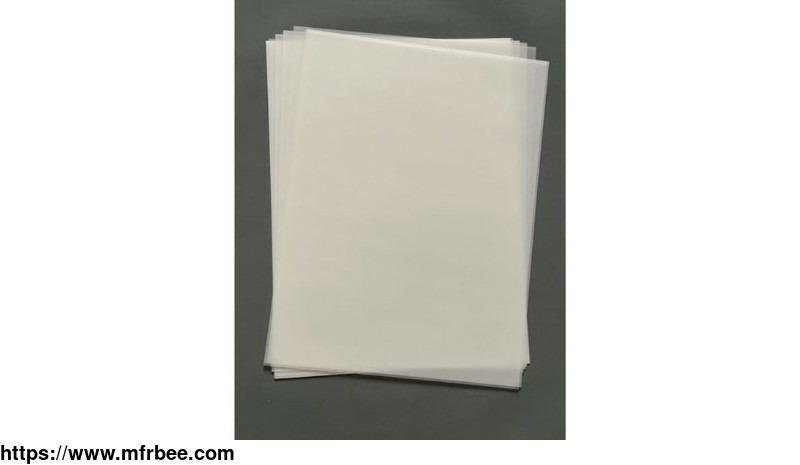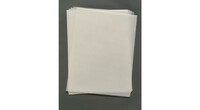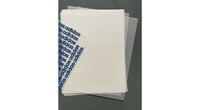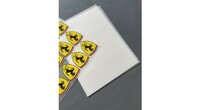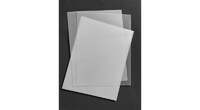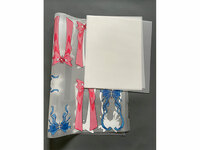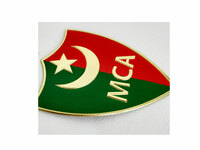PET HEAT TRANSFER FILM FOR SOLVENT INK
Specifications
Heat transfer films for solvent-based PU inks are matte and super matte finished with a cold peel. One or two sides are printable. The backside does anti-static coating, which has good performance
on the garment.
What Is the Difference: Eco Solvent Vs DTF Transfer Film?
Eco solvent transfers and DTF transfer film differ in their printing process and ink compatibility. Eco-solvent transfer film requires separate printing on the film using an eco-solvent inkjet
printer, while DTF transfer film allows direct printing onto the film using a DTF printer. Eco-solvent transfer film works with eco-solvent inks, while DTF transfer film can work with pigment-based
or eco-solvent-based inks. The choice depends on the preferred printing process, ink compatibility, and the specific requirements of the project.
What Is Solvent Ink Used For PET Heat Transfer Film?
Unlike aqueous ink, solvent ink can be used to print directly on plastic, vinyl, and other non-absorbent materials. Solvent ink is most commonly used to print items such as signs and banners used
outdoors and has to be highly resistant to damage and fading caused by weather, scratching, and ultraviolet radiation.
What Is Solvent Ink Used For PET Heat Transfer Film?
Applications of Eco Solvent Transfer Film
Textile Printing: Eco solvent transfer paper is commonly used for printing designs onto textiles such as t-shirts, jerseys, hats, and other garments. The films allow for high-quality and vibrant
prints with excellent washability and durability.
Custom Apparel: Eco-solvent transfer films are ideal for creating custom apparel, including personalized t-shirts, hoodies, and sportswear. They enable the transfer of intricate designs, logos, and
graphics onto fabrics with ease.
Promotional Items: Eco solvent heat transfer paper is used to decorate promotional items like bags, caps, and promotional products. They offer a cost-effective solution for producing branded
merchandise with colorful and eye-catching designs.
Heat Transfers: Eco solvent heat transfer paper is suitable for heat transfer applications on a range of substrates, including fabrics, plastics, ceramics, and metals. The films allow for easy
application using heat and pressure, resulting in a seamless transfer of the design onto the target surface.
Eco Solvent Transfer Film FAQs
What surfaces can eco-solvent transfer film be used on?
Eco solvent heat transfer paper can be used on a variety of surfaces, including fabrics (such as cotton, polyester, and blends), plastics, ceramics, metals, and more. It is important to choose the
appropriate film and follow the manufacturer's instructions for the specific surface you are working with.
Can eco-solvent transfer films be used for dark-colored fabrics?
Yes, there are eco solvent heat transfer vinyl available specifically designed for dark-colored fabrics. These films typically include an opaque layer or a white base layer that allows for vibrant
and opaque prints on dark backgrounds.
Are there any special considerations when using eco-solvent transfer films?
It is essential to follow the manufacturer's instructions for proper printing, cutting, and application techniques. Different types of solvent inkjet film may have specific temperature and
pressure requirements. Additionally, it's important to ensure proper ventilation when working with eco-solvent inks.
For more information about thermal transfer film, please feel free to contact us!
- Country: China (Mainland)
- Founded Year: 2020
- Address: NO.32 KANGXU ROAD CHANGSHOU ZHOUZHUANG TOWN JIANGYIN CITY JIANGSU CHINA
- Contact: heattransferfilms com
